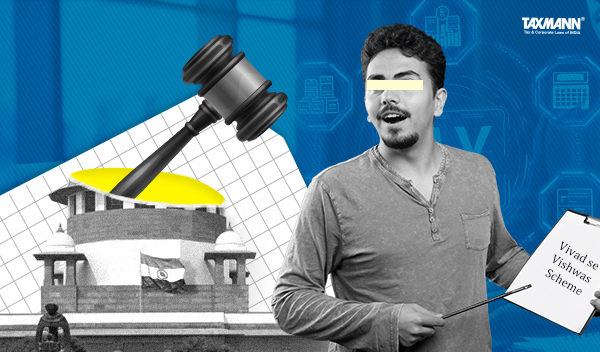Assessee Entitled to Carry Forward Reduced MAT Credit for Payment of Taxes Under Vivad Se Vishwas Scheme | HC
- Blog|News|Income Tax|
- 2 Min Read
- By Taxmann
- |
- Last Updated on 24 October, 2024

Case Details: Vapi Care Pharma (P.) Ltd. vs. Principal Commissioner of Income-tax - [2024] 167 taxmann.com 518 (Gujarat)
Judiciary and Counsel Details
- Bhargav D. Karia & Niral R. Mehta, JJ.
-
Hardik V. Vora for the Petitioner.
-
Mrs Kalpana K. Raval for the Respondent.
Facts of the Case
In the instant case, consequent to a search, an assessment order under section 143(3), read with section 153A, was passed, determining the assessed income. On appeal, the CIT(A) confirmed the addition on account of unaccounted sale proceeds received in cash. The order giving effect was passed, revising the total income.
Thereafter, the rectification order under section 154 was passed ascertaining the tax liability after giving credit under section 115JAA towards MAT Credit, being the difference between the tax payable under normal provision and tax payable under section 115JB. The Assessing Officer (AO) then levied penalty under section 271AAB(1)(c). The assessee, being aggrieved by the penalty order, preferred appeal before the CIT(A).
Subsequently, the Direct Tax Vivad Se Vishwas Scheme was introduced, and the assessee decided to settle its pending appeals by taking benefit of the same and filed Forms No. 1 and 2 under the Scheme. In Part A of the said Form 1, the assessee opted not to pay the tax and filled necessary details about the reduction in the MAT Credit in Schedule D of the said Form 1 and claimed a refund on account of pre-payment of taxes. By issuing Form No.3, AO determined the amount of tax payable under the Scheme. The assessee preferred an application to rectify Form No.3, which was rejected.
Aggrieved by the order, the assessee filed a writ petition before the Gujarat High Court.
High Court Held
The High Court held that on perusing Rule 10 of the DTVSV Rules, it was clear that the assessee was entitled to carry forward the reduced MAT credit for payment of the taxes under the Scheme as the assessee has the option. This is further fortified by the answer to Question 53 of the FAQ as per Circular No. 9/2020 issued by the CBDT.
On perusal of the remarks made by the revenue in Form 3, it was apparent that the revenue, though, has taken into consideration that the AO permitted the carry forward of the MAT credit. Still, while calculating the amount payable by the assessee in Form 3 with regard to tax arrears and the amount payable under DTVSV, the revenue has not taken into consideration the order passed by the AO for permitting the assessee to carry forward the MAT credit being the difference between tax payable under the normal provision of tax payable under section 115JB. Thus, the assessee was entitled to reduce the MAT credit for not paying any amount otherwise payable as calculated in Form No. 3.
Accordingly, impugned Form No. 3 and the rectification order were required to be quashed and set aside by remanding the matter back to the revenue to re-calculate the refund entitlement in accordance with the Scheme and the Rules thereunder.
Disclaimer: The content/information published on the website is only for general information of the user and shall not be construed as legal advice. While the Taxmann has exercised reasonable efforts to ensure the veracity of information/content published, Taxmann shall be under no liability in any manner whatsoever for incorrect information, if any.

Taxmann Publications has a dedicated in-house Research & Editorial Team. This team consists of a team of Chartered Accountants, Company Secretaries, and Lawyers. This team works under the guidance and supervision of editor-in-chief Mr Rakesh Bhargava.
The Research and Editorial Team is responsible for developing reliable and accurate content for the readers. The team follows the six-sigma approach to achieve the benchmark of zero error in its publications and research platforms. The team ensures that the following publication guidelines are thoroughly followed while developing the content:
- The statutory material is obtained only from the authorized and reliable sources
- All the latest developments in the judicial and legislative fields are covered
- Prepare the analytical write-ups on current, controversial, and important issues to help the readers to understand the concept and its implications
- Every content published by Taxmann is complete, accurate and lucid
- All evidence-based statements are supported with proper reference to Section, Circular No., Notification No. or citations
- The golden rules of grammar, style and consistency are thoroughly followed
- Font and size that’s easy to read and remain consistent across all imprint and digital publications are applied



 CA | CS | CMA
CA | CS | CMA
